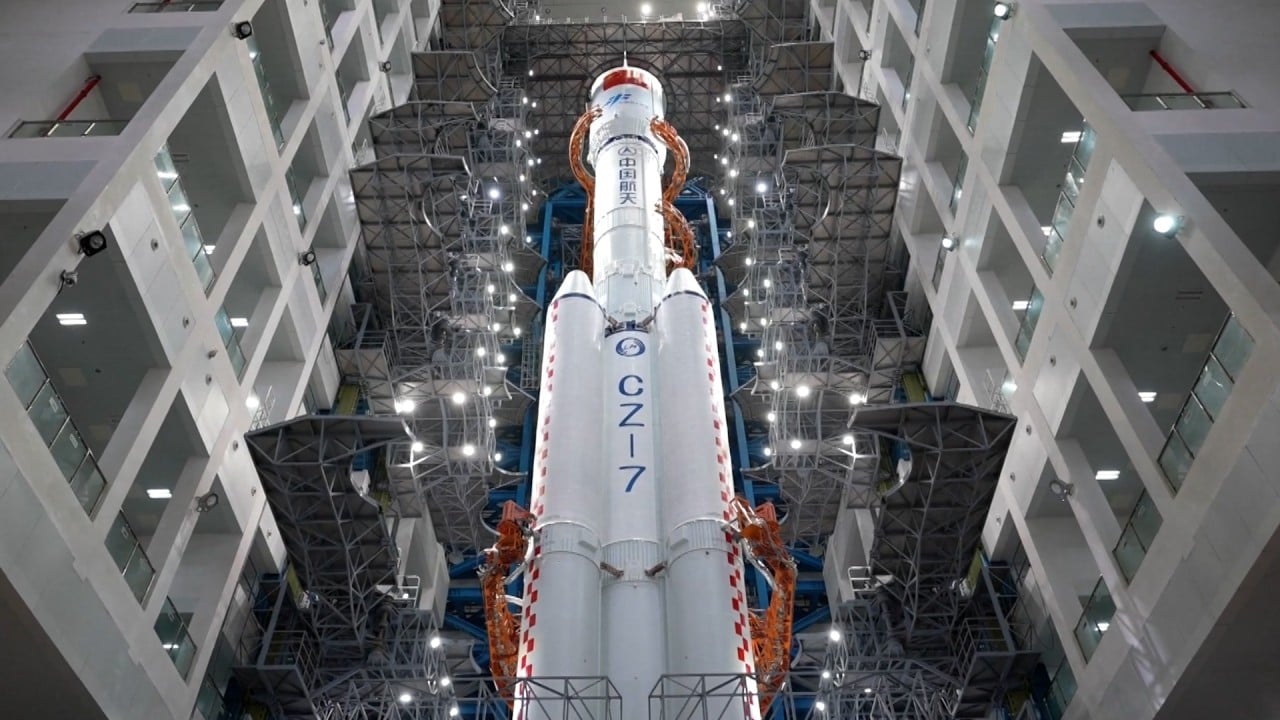China’s most powerful space engine configuration is ‘ready for flight’
The YF-100K engines, which each produced 130 tonnes of thrust, were designed with a pump back swing technology, which effectively reduces the size and weight of the engine structure compared to the traditional front pump swing design.
“Engines built with the pump back swing technology are typically more compact. For instance, we can fit four of them into a 3.8m-wide first-stage rocket, and seven into a 5m-wide first-stage,” Li said.
The engines are the latest variant of the YF-100 kerolox engine, which powers the side boosters of China’s largest and most powerful launch vehicle, the Long March 5.
While the CASC did not specify which rocket will be powered by the four parallel YF-100K engines, it said they will be used for a Long March model that will make its debut this year.
CCTV reported in February that the two-stage Long March 12 – China’s first rocket with a 3.8 metre (12ft 5in) diameter – is expected to make its maiden flight in 2024, from one of the new commercial launch pads at the Wenchang spaceport in Hainan province.
The 59-metre (nearly 7ft) Long March 12 will be a medium-lift launch vehicle capable of carrying a 10-tonne payload to low Earth orbit and six tonnes to a 700km (435 miles) sun-synchronous orbit.
In September, CCTV said that YF-100K engines will be used for Long March 10 – the superheavy carrier rocket China is developing to put its astronauts on the Moon before 2030 – which is expected to make its maiden flight in 2027.
US-China space race fuelled by lunar landings and orbital ‘parking spots’
At 92 metres (300ft) tall and with a diameter of 5 metres (16ft 5in), the moon rocket’s first-stage core and two boosters will each be powered by seven YF-100K engines to create an enormous 2,600 tonnes of thrust at lift-off, the report said.
The Long March 10 will be able to deliver 70 tonnes to low Earth orbit and 27 tonnes into trans-lunar injection orbit, the critical step towards putting a spacecraft on a trajectory for a moon landing.
